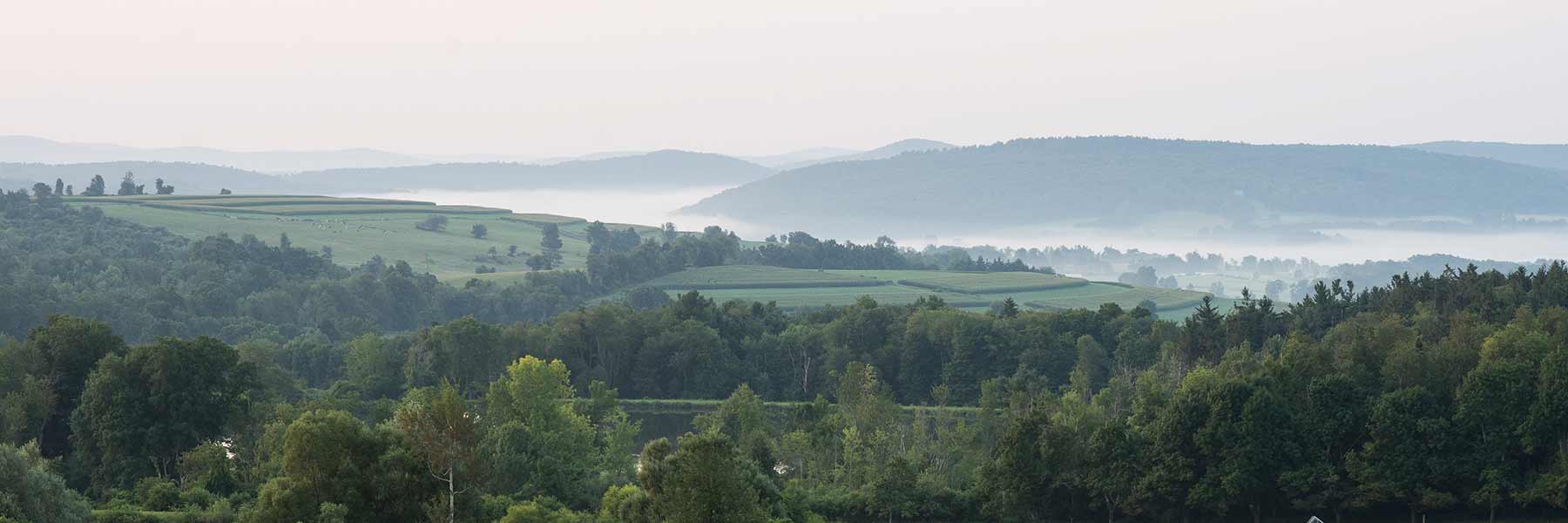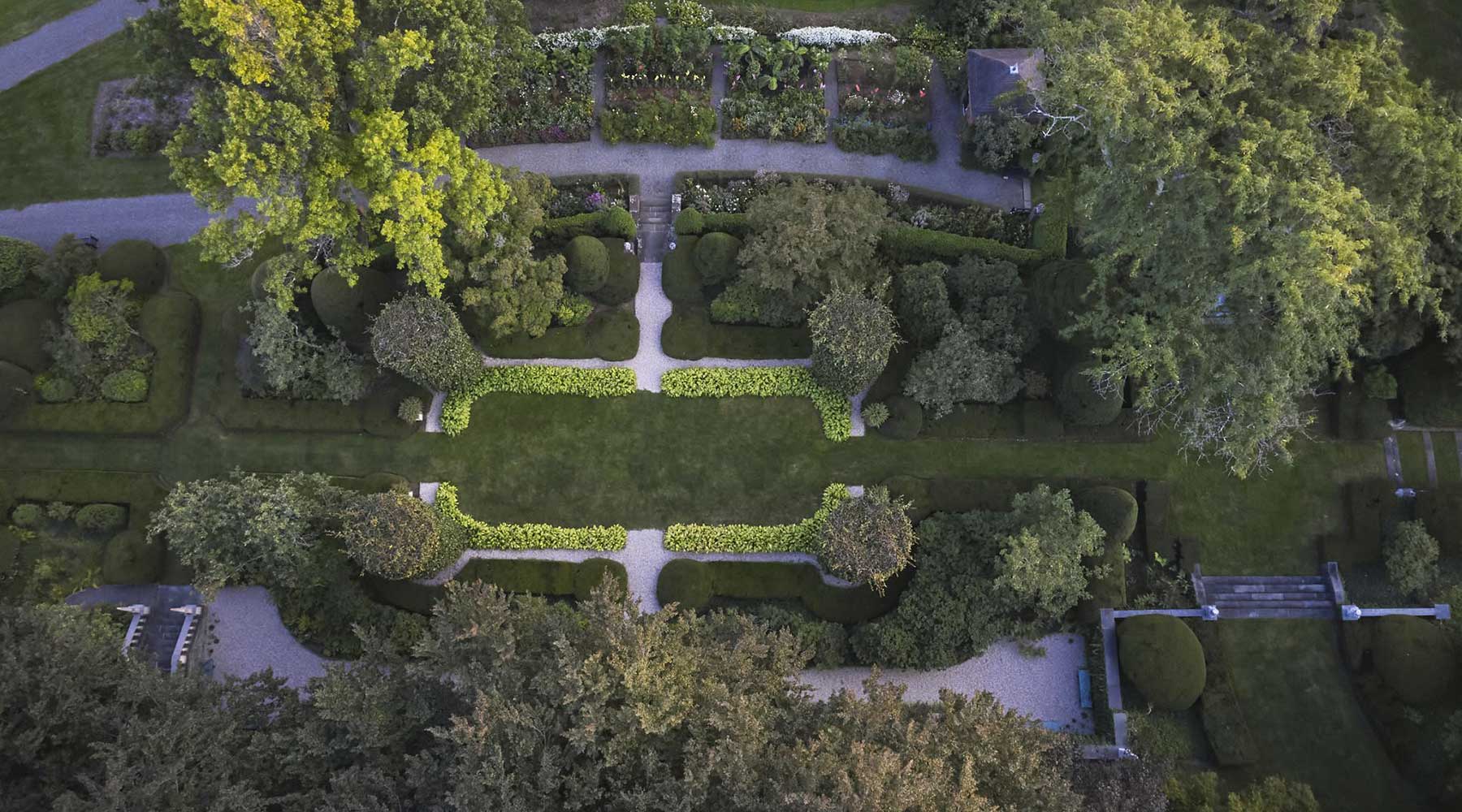
Conservation & Horticulture
The natural beauty at Wethersfield is a product of conservation efforts undertaken by Wethersfield founder Chauncey Stillman and his property manager, Owen Boyd, beginning as early as 1937. Their efforts towards land conservation combined with lessons learned from the cataclysmic Dust Bowl of the 1930’s helped form the bedrock of agriculture at Wethersfield in the 20th century.
In the hills surrounding Wethersfield, there are examples of contour farming. This method allows for crop rotation and helps prevent water and soil erosion. Additionally, the ponds at Wethersfield were actually man-made natural springs designed to catch the run-off water from fields and used for irrigation in times of drought.
Conservation practices were started almost immediately after Mr. Stillman purchased the original farmland, at first a barren hilltop. Mr. Stillman’s goal was to use each acre of the property to its fullest potential.
Mr. Stillman was a member of the American Tree Farm System. To be a member, landowners had to demonstrate that they were protecting their land from fire, insects, disease, and destructive grazing, as well as carrying on a planned program of regular harvests, providing for future growth.
As early as 1952, Wethersfield was renowned for its use of nearly every conservation practice available in the Northeast and hosted a tour of delegates attending the UN Scientific Conference on Conservation. Mr. Stillman was the director of the Audubon Society from 1964-65.
Today, Wethersfield Estate & Garden recruits the next generation of horticultural visionaries to practice innovative and sustainable gardening techniques as one element of contemporary classicism. In addition, we are fortunate to benefit from the expertise of renowned garden writer Page Dickey, and designer and taste-maker Christopher Spitzmiller, among others.
Garden Design
Initial design of the Wethersfield Garden was led by Bryan J. Lynch in an Arts & Crafts-style. In 1947, Evelyn N. Poehler began work on the classical Italian garden. This working relationship between Poehler and Stillman would continue for decades.
Poehler compared her garden design to “rooms” that mirrored those in the Main House – in effect, extending the scope of the house. Visitors move through corridors, hedges, and other greenery and chance upon arches, sculpture, and water features.

